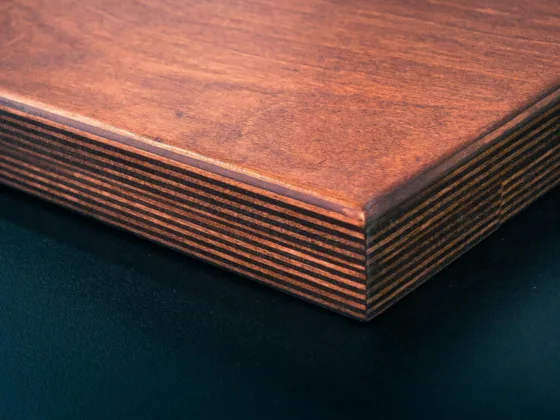Table of Contents Show
Floor soundproofing is a crucial aspect of modern construction, aiming to minimize the transmission of sound between different levels of a building. The effectiveness of floor soundproofing hinges largely on the materials used, each possessing unique properties that influence their sound-dampening capabilities.
Traditional materials, like mass-loaded vinyl (MLV) and acoustic foam, have long been staples in the industry. MLV, known for its density and mass, effectively blocks airborne noise, while acoustic foam, with its open-cell structure, excels in absorbing sound waves. Recent years have seen the emergence of more innovative materials, such as green glue and soundproof underlayment, offering both sound insulation and environmental benefits.
As we delve deeper into these materials, it’s crucial to understand their composition, mechanism of action, and suitability for different types of floors, be they concrete or wooden structures.
The Role of Density in Floor Soundproofing
Density plays a pivotal role in floor soundproofing, acting as the primary barrier against noise transmission. Heavier materials, like MLV, leverage their mass to reflect and absorb sound waves, making them highly effective against a range of frequencies.
On the other hand, lighter materials, such as cork or rubber underlayment, while less effective in blocking lower frequencies, offer excellent vibration-dampening properties. This is particularly important in scenarios where foot traffic or machinery causes structural noise.
The comparison between these materials demonstrates a fundamental trade-off in soundproofing: the heavier the material, the better its sound-blocking capabilities, but at the cost of increased floor load and potential structural considerations. Understanding this balance is crucial for architects, builders, and homeowners alike, as the choice of material can greatly influence the overall effectiveness of the soundproofing solution.
Evaluating the Acoustic Properties of Various Soundproofing Materials
When assessing the acoustic properties of floor soundproofing materials, it’s essential to consider factors like Sound Transmission Class (STC) and Impact Insulation Class (IIC) ratings. Materials like MLV, with high STC ratings, are adept at blocking airborne noises such as voices and music.
Conversely, materials with high IIC ratings, such as specialized underlayments, are more effective against impact noises, like footsteps or dropped objects. The choice of material thus depends on the specific type of noise problem being addressed.
Furthermore, the interaction of these materials with other elements of the floor structure, like subflooring and finish flooring, also affects their overall performance.
For instance, a material that performs exceptionally as a standalone product might see diminished effectiveness when combined with certain types of flooring, underscoring the importance of a holistic approach to floor soundproofing.
Cost vs. Performance
The decision-making process for floor soundproofing often involves balancing cost against performance. High-end materials like engineered soundproofing boards offer excellent noise reduction but come at a premium price. More affordable options, such as recycled rubber underlayments, provide a good balance of performance and cost, making them a popular choice for residential applications.
It’s important to consider the long-term benefits of investing in higher-quality materials, particularly in environments where soundproofing is a critical requirement, such as recording studios or multi-unit residences.
Additionally, installation costs and the potential need for professional assistance can also influence the overall budget. Therefore, a comprehensive analysis of both the upfront and long-term costs associated with different floor soundproofing materials is crucial for making an informed decision.
The Environmental Impact of Different Soundproofing Materials
In today’s eco-conscious world, the environmental impact of building materials is a growing concern. Floor soundproofing materials are no exception. Traditional options like MLV are effective but often made from synthetic materials that are not biodegradable.
In contrast, newer, eco-friendly materials such as cork and recycled rubber offer soundproofing solutions with a smaller environmental footprint. These materials not only contribute to a building’s overall sustainability but also appeal to a market increasingly driven by green building practices.
The lifecycle of these materials, including their production, installation, and disposal, should be considered when evaluating their environmental impact. As the industry moves towards more sustainable practices, these factors are becoming increasingly important in the selection process for floor soundproofing materials.
Future Trends in Floor Soundproofing
The future of floor soundproofing lies in the innovation and development of new materials and technologies. Advancements in material science are leading to the creation of thinner, lighter, yet more effective soundproofing solutions.
These include smart materials that can adapt their acoustic properties based on environmental conditions or the specific frequencies of noise they encounter. Additionally, there is a growing trend towards integrating soundproofing features directly into building materials, such as sound-absorbing floor tiles or boards.
Such developments promise to make soundproofing more efficient and less intrusive, opening up new possibilities for architects and builders. As these technologies evolve, they are set to redefine the standards of floor soundproofing, making it more accessible, effective, and environmentally friendly.
What Are the Key Factors to Consider When Choosing a Floor Soundproofing Material?
When selecting a floor soundproofing material, consider the type of noise you need to block (airborne or impact), the material’s Sound Transmission Class (STC) and Impact Insulation Class (IIC) ratings, compatibility with your existing floor structure, environmental impact, and your budget.
The effectiveness of a material can vary based on these factors, so it’s important to assess your specific needs and constraints before making a decision
Can I Install Floor Soundproofing Materials Myself, or Do I Need Professional Help?
Many floor soundproofing materials can be installed by a competent DIY enthusiast, especially simpler solutions like acoustic underlayments.
However, for more complex systems or materials that require precise installation, such as mass-loaded vinyl (MLV), it’s often advisable to seek professional help. Proper installation is key to ensuring the effectiveness of the soundproofing, so if you’re unsure, consulting a professional is a wise choice.










